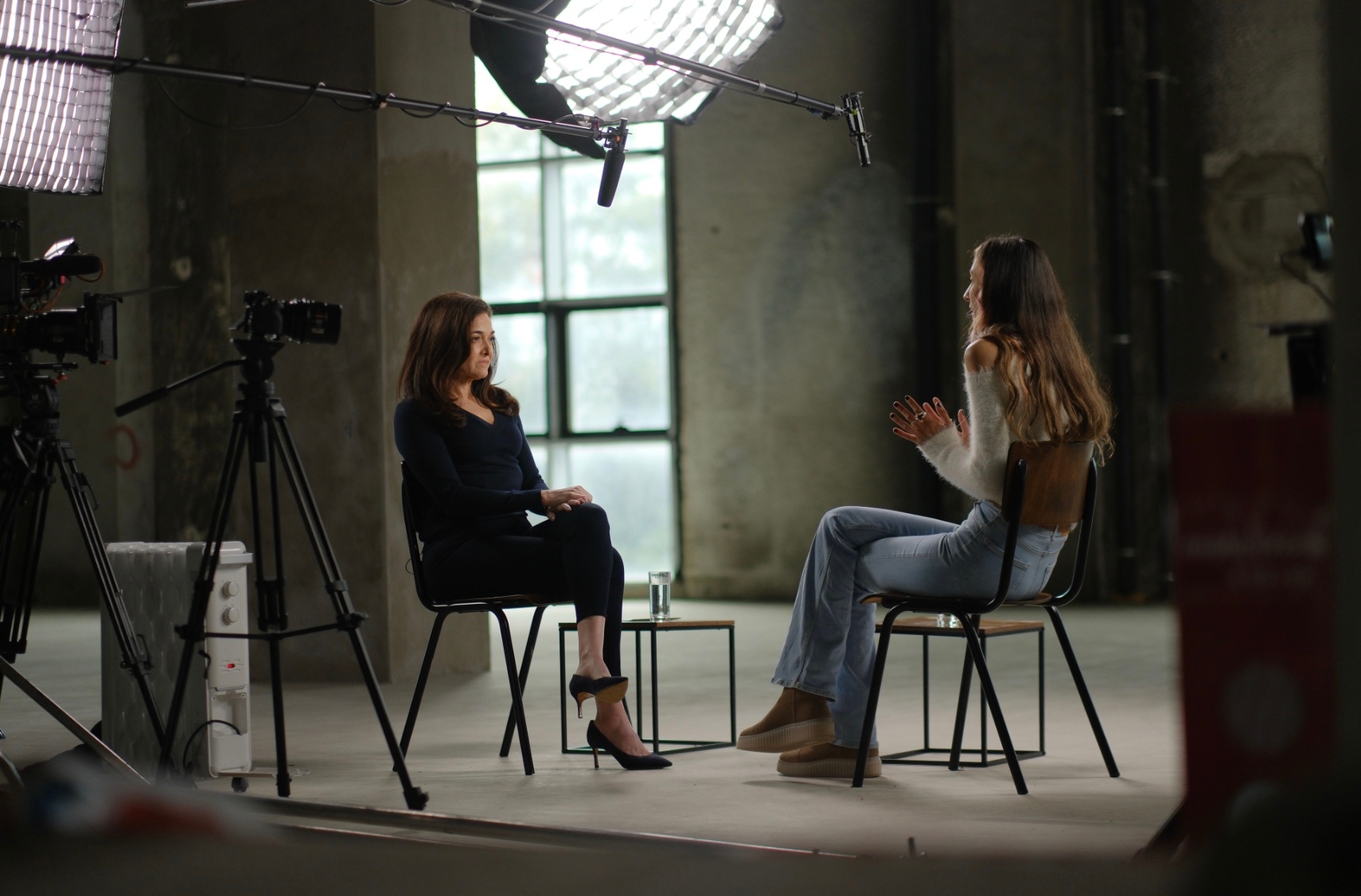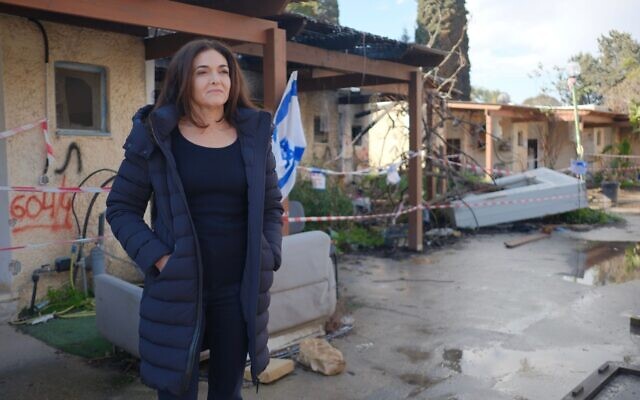Documenting Hamas’s sexual violence
A first responder to the October 7 massacre, Eran Masas, spoke to Sharyn Kolieb about the importance of the documentary Screams Before Silence.
*Warning box: CONTENT WARNING: graphic descriptions of rape and violence.*
In the aftermath of the October 7 Hamas attack on Israeli civilians, reports of cruelty and brutality, not seen since the Holocaust, began to flood social media.
There were the Hamas GoPros that documented themselves killing, kidnapping and torturing Israelis even young children. There were also the witnesses who told of mass rapes, of women bound without clothes and of genital mutilation. So many of these women and men, who experienced sexual violence were killed and their bodies buried, and so the
denials began.
Many denied mass rapes occurred and denied Hamas committed atrocities. When a March UN report finally acknowledged grounds that “rape and gang-rape … occurred across multiple locations of Israel” on October 7, some anti-Israel activists even justified rape and terrorism, supporting the morally bankrupt position of “resistance by any means”.
It was Sheryl Sandberg, former Meta COO, who took the initiative to make a documentary film to document Hamas’s sexual crimes. Screams Before Silence was created in cooperation with Israel’s Kastina Productions, and features testimonies from survivors, released hostages and first responders and is free for anyone to watch online.
It includes the testimony of Nova festival massacre survivor Raz Cohen who recounts witnessing a rape.

“They just did what they wanted to her. There were no rules. Then he stabbed or slaughtered her with a knife and continued to rape her. She could have already been dead as he continued to rape her.”
Another Nova survivor Tali Binner who hid in a trailer tells of hearing women screaming “stop” before they were shot and killed. Binner said, “I heard a girl that started to yell for a long time. It was like, ‘Please don’t. No, no, stop. Stop. Stop. Stop. No. No. No.’ It was like, she was asking someone to stop. What can they stop? Someone is abusing her. Someone touching her. Someone is doing something.”
Rami Davidian went to Nova to find survivors. Returning to the site of the massacre for the film, Davidian said, “I saw girls tied up with their hands behind them to every tree here. Someone murdered them, raped them and abused them, here on these trees. Their legs were spread. Everyone who sees this knows right away that the girls were abused. Someone stripped them. Someone raped them. They inserted all kinds of things into their intimate organs. Over 30 girls were murdered and raped here.”
ZAKA rescue and body retrieval organisation volunteers Haim Otzagin and Simcha Greiniman show Sandberg photos of mutilated women. “We found one woman in her home under a mattress. She was naked, and nails and other things were hammered into her female area,” Greiniman said.
It also includes the testimonies of Israeli hostages held in Gaza. Amit Soussana, who was held captive for 55 days in Gaza and released in November, said she experienced sexual violence from her captor. “He came toward me and just pointed a gun really hard at my forehead, screaming at me, ‘Take it off. Take it off,’ and punching me until I could not hold the towel anymore. And he started touching me, and I resisted, and then he dragged me to the bedroom. And then he forced me to commit a sexual act on him.”
Sandberg also accompanies teenager Agam Goldstein-Almog to her home in Kfar Aza, the scene in which Almog recounts the way in which terrorists killed her father and sister on October 7.
She and her mother and two brothers were kidnapped to Gaza and released in November. Almog tells that she was groped by her captor and said, “Half of the girls and young women I met in captivity told me they experienced sexual or physical abuse or both. They are still living there with their rapists.”
Ayelet Levy Sachar, the mother of 19-year-old Naama Levy, who was kidnapped to Gaza was also interviewed for the film.
The video of Naama being kidnapped with her pants soaked in blood indicating sexual violence, are one of the most known videos of the Hamas attack.
Sachar told Sandberg, “They’re grabbing her by the hair, and she’s all messed up and like, and I’m thinking of her hair, in my mind I’m stroking her hair, like I’m always doing.”
She said, “We would like to think that this couldn’t be possible. That nobody would harm a young girl. But then you just see it there.”
The AJN spoke to Eran Masas, a first responder who came to Australia to speak at screenings of Screams before Silence in Melbourne and Sydney. Masas said he wanted to be part of the documentary because he wanted to share his testimony, saying, “This is my new mission in life.”
On the morning of October 7, after his brother alerted him to a terrorist attack saying, “Get up because we’ve lost the country,” he decided to drive two hours south from the Haifa region to Sderot, to see if he could help given his experience in the Israeli army as a lieutenant colonel.
On his way to Sderot he stopped at Moshav Patish, on seeing panicked people, he pretended to be an on-duty Israel Defence Forces officer to reassure them and help them evacuate. At the moshav there were survivors of the Nova massacre, who asked him to help save their friends still there, pointing to their location on their phones.
On his way to the site, Masas found a police car with policemen who had been killed. At that place a terrorist pointed his gun at Masas, but Masas fired first, killing the terrorist.
When he approached the site of the festival massacre he was confronted with the scale of the attack and began filming on his phone. In this footage, shown in the documentary, we see Masas calling out for survivors and being met with the silence of dead bodies all around.
Masas tells The AJN he was able to find five people who were hiding in a tree and take them to safety, he also guarded the bodies of the dead from being kidnapped by Hamas.
Regarding the sexual violence he witnessed, Masas said that there were many naked bodies with their legs spread, and that he saw a woman had been shot in the genitals. At the screening in Melbourne Masas said, “I evacuated 100 bodies in very bad shape, six of them were girls that were surely raped and had been through sexual violence.”
Masas told The AJN he has experienced significant post-traumatic stress from what he witnessed. “I’m not going to sleep, I’m not eating, I’m not the same … I wake up and I think about it and go to sleep and think about it.”
Masas broke down in tears as he described what he had witnessed, saying he thought of his daughter when he was confronted with the dead bodies of young women.
Masas and other witnesses, point to the scale of the sexual violence which appears systematic and intentional. He is currently fundraising to create programs to help Israelis deal with post-traumatic stress.

Ruth Halperin-Kaddari, a former vice president of the UN Committee on Elimination of Discrimination Against Women, told Sandberg, “Bodies whose breasts were cut off were found in several … locations. It depicts a pattern that could not have been unless it was premeditated and preconceived by Hamas themselves.”
Shari Mendes, an IDF reservist who served at the October 7 morgue at the Shura military base, reported she witnessed deliberate genital mutilation and sexual violence, stating: “Women were shot in the head so many times that it seemed like there was an intention, an objective, to obliterate their faces. Most often, families couldn’t be shown the faces of their daughters. And we began to see that some of it was sexual in nature – directly targeted sexual violence,” adding, “It did seem systematic – to use sexual violence as a weapon of war.”
During the screenings of Screams Before Silence in Melbourne and Sydney, Dr Sarah Meger, a senior lecturer in international relations at the University of Melbourne who is an expert in sexual violence in war, spoke on the panel.
Asked why sexual violence in conflict occurs, Meger said, “I think from what we heard in this film and other information we have about what happened on 7th October, this particular instance of mass sexual violence I think stems out of a particular kind of cultural, ideological belief.
“Hamas as a terrorist organisation wanted to use violence … it’s far beyond a sexual act right? It was about humiliation, it was about undermining the solidarity and strength of the Israeli community … And I think these acts that we hear about in the film, the element of mutilation … and gratuitous violence far beyond just raping women … that really speaks volumes to the ways sexual violence can be used to terrorise political communities.”
Kylie Moore-Gilbert, an academic who was held hostage in Iran and released in 2020 in a prisoner exchange, also spoke on the panel about the plight of the hostages.
“What I went though is nothing compared to what these innocent people are going through in the tunnels of Gaza right now, those which are still alive,” she said. “I can’t compare it at all but I would say … public advocacy is very important. Hope is crucial.”
Sandberg has described this documentary as the “most important work” of her life. She has compiled evidence that is clear and compelling to document Hamas’s sexual violence and it needs to be seen by everyone.
At the end of the film, Sandberg says she made it because with most of Hamas’s victims silenced by murder, she hopes: “Anyone who watches this film can bear witness.”
To watch Screams Before Silence visit: screamsbeforesilence.com


comments